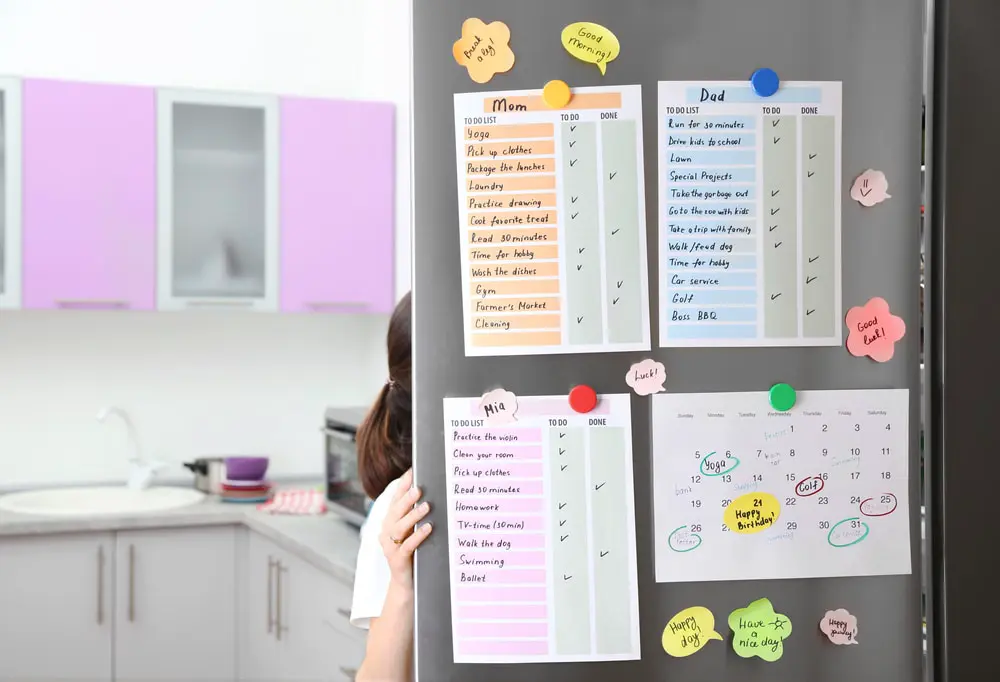Chores are always a difficult topic of conversation in any household.
Things can get out of control pretty quickly if we don’t stay on top of them.
So what about chore charts?
You know the ones, a chart with a row for each family member and their household tasks, and stickers and ticks for when these tasks are completed.
Do they work?
Our thoughts are yes, they do work.
Our list of reasons why is here to back us up on this.
They Provide Responsibility
Having a chore chart gives every member of your house, including children, a healthy level of responsbility.
If they don’t complete their tasks, everyone can see this and they won’t get any reward.
They have to take responsibility for their own chores and get them done on their own actions.
Getting your children used to this kind of system will teach them responsibility and accountability going forward in life. The sooner they learn that someone won’t come behind them and clean up all their messes for them, the better.
They Are a Visual Reminder

Having a chore chart up in a place in the house where everyone can see it is a great way for everyone to be consistently visually reminded of all the tasks they have to do.
There is no room for the “I forgot” excuse anymore.
And not only for the kids.
It’s good for the adults to have a visual reminder of everything that needs done by everyone in the family.
There are a lot of goings-on in the family home and having them laid out in an accessible and visual way is a great way to organise that chaos.
Positive Reinforcement Tools

Chore charts are good for introducing positive reinforcement into the world of chores.
Sometimes when it comes to chores, our children only hear the negatives. “You didn’t do this… You forgot to do this…”
This can lead to them associating all housework and only chores with an overall negative experience.
Having a chore chart brings a reward system into the mix.
It is important when using a chore chart that you focus on rewarding your children’s good behaviours and consistent habits, more so than their failings.
You can decide whatever treats or incentives will work best for your children, and whether you want to provide small treats for every small goal, or let the goals build up to gain a bigger treat.
Whatever way you do it, positive reinforcement brings positive change into your house.
They Are Fun

Chores aren’t usually something we think of as “fun”, not for children or for adults.
But with chore charts you can organise games and competitions around the chores that need done in your house.
You can have your family compete against eachother to win prizes, when the prize all along is really that your house is getting cleaner and tidier in the process.
Constantly having to nag your children and even partner about household taks gets pretty boring, and everyone involved gets sick of hearing about it.
Introducing some fun and healthy competition into this is a great way to liven things up again.
A little game never hurt anyone.





